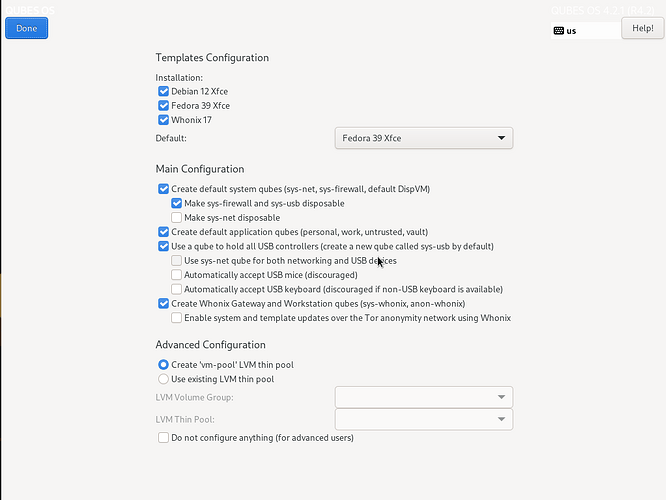---
layout:
'hcl'
type:
'Notebook'
hvm:
'yes'
iommu:
'yes'
slat:
'yes'
tpm:
'2.0'
remap:
'yes'
brand: |
HP
model: |
HP EliteBook 840 G6
bios: |
R70 Ver. 01.30.00
cpu: |
Intel(R) Core(TM) i7-8665U CPU @ 1.90GHz
cpu-short: |
FIXME
chipset: |
Intel Corporation Coffee Lake HOST and DRAM Controller [8086:3e34] (rev 0c)
chipset-short: |
FIXME
gpu: |
Intel Corporation WhiskeyLake-U GT2 [UHD Graphics 620] [8086:3ea0] (rev 02) (prog-if 00 [VGA controller])
gpu-short: |
FIXME
network: |
Intel Corporation Cannon Point-LP CNVi [Wireless-AC] [8086:9df0] (rev 11)
Intel Corporation Ethernet Connection (6) I219-LM [8086:15bd] (rev 11)
memory: |
32447
scsi: |
usb: |
2
certified:
'no'
versions:
- works:
'FIXME:yes|no|partial'
qubes: |
R4.2.4
xen: |
4.17.5
kernel: |
6.6.77-1
remark: |
FIXME
credit: |
FIXAUTHOR
link: |
FIXLINK
Brand: HP
Model: HP EliteBook 840 G6
CPU: Intel(R) Core™ i7-8665U CPU @ 1.90GHz
Chipset: Intel Corporation Coffee Lake HOST and DRAM Controller [8086:3e34] (rev 0c)
Graphics: Intel Corporation WhiskeyLake-U GT2 [UHD Graphics 620] [8086:3ea0] (rev 02) (prog-if 00 [VGA controller])
RAM: 32447 Mb
QubesOS version: R4.2.4
BIOS: R70 Ver. 01.30.00
Kernel: 6.6.77-1
Xen: unknown
Attachments
HCL_HP_EliteBook_840_G6.yml (929 Bytes)






